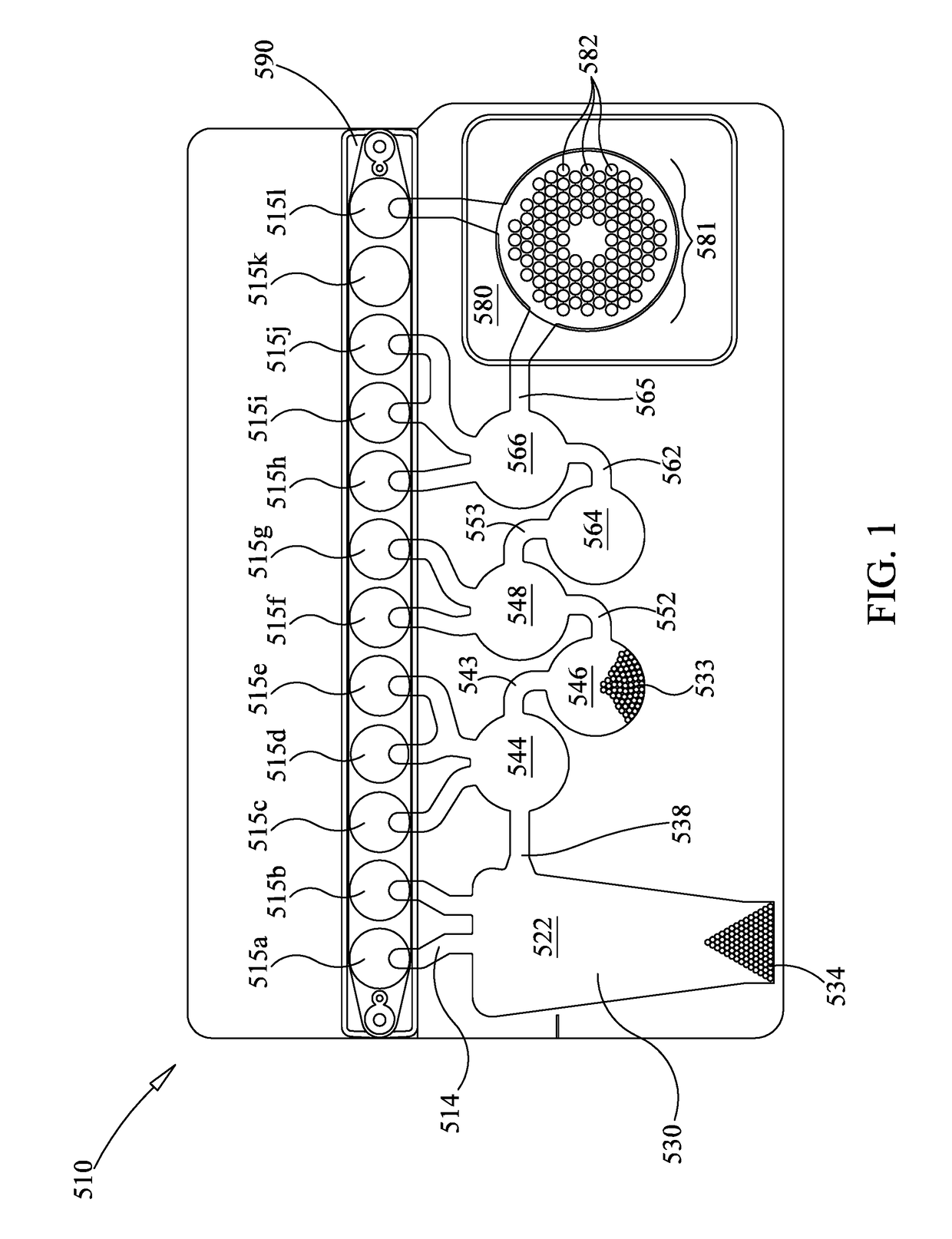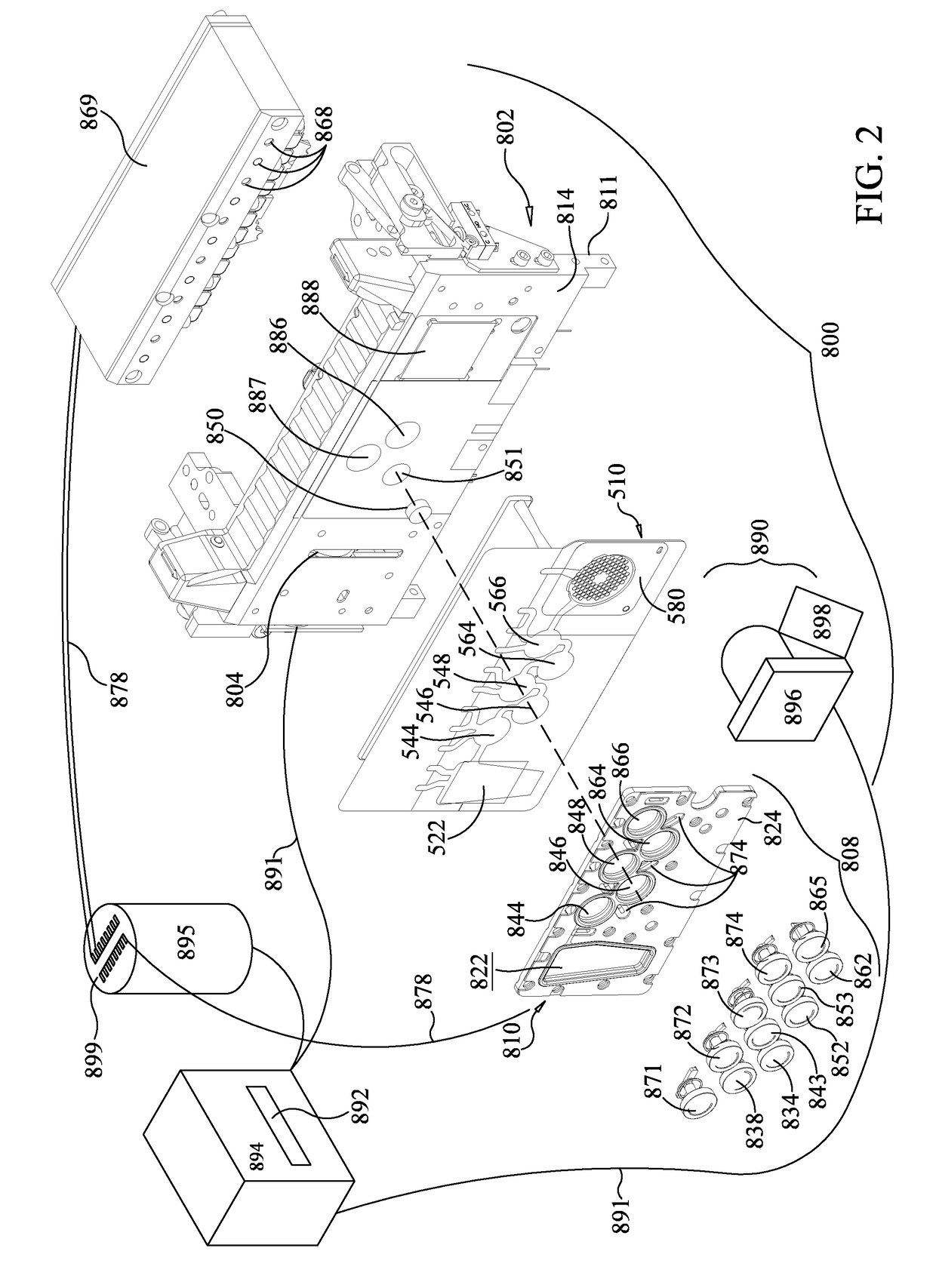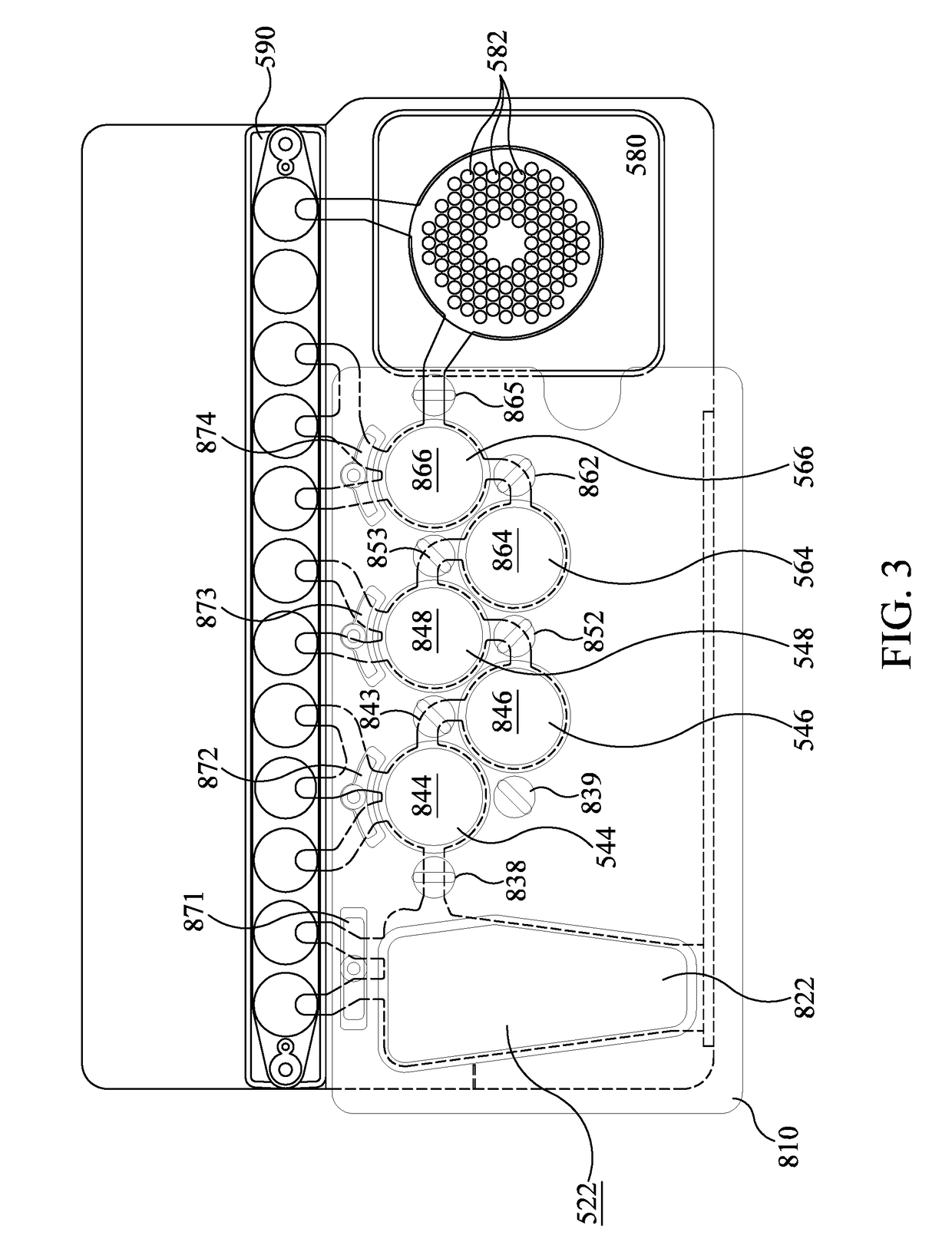Devices and methods for rapid PCR
a nucleic acid and nucleic acid technology, applied in biochemistry equipment and processes, fluid controllers, laboratory glassware, etc., can solve the problems of reducing affecting the accuracy of pcr assays, so as to reduce the temperature of samples and accelerate the amplification of nucleic acids
- Summary
- Abstract
- Description
- Claims
- Application Information
AI Technical Summary
Benefits of technology
Problems solved by technology
Method used
Image
Examples
example 1
High Density PCR
[0189]In one example, it is known that standard commercial immunofluorescence assays for the common respiratory viruses can detect seven viruses: adenovirus, PIV1, PIV2, PIV3, RSV, Influenza A, and Influenza B. A more complete panel illustratively would include assays for other viruses including: coronavirus, human metapneumovirus, rhinovirus, and non-HRV enterovirus. For highly variable viruses such as Adenovirus or HRV, it is desirable to use multiple primers to target all of the branches of the virus' lineage (illustratively 4 outer and 4 inner primer sets respectively). For other viruses such as coronavirus, there are 4 distinct lineages (229E, NL63, 0C43, HKU1) that do not vary from one season to another, but they have diverged sufficiently enough that separate primer sets are required. The FilmArray® Respiratory Panel (BioFire Diagnostics, LLC of Salt Lake City, Utah) includes Adenovirus, Coronavirus HKU1, Coronavirus NL63, Coronavirus 229E, Coronavirus 0C43, H...
example 2
[0190]A prototype instrument using the pouch and heater configuration of FIGS. 6-8 was used to amplify DNA. A 75 μl sample comprising 10,000 copies of a 110 bp synthetic DNA molecule and a 10× higher primer (5 μM each primer) and DNA polymerase (2 U / μL) concentrations (as compared to standard PCR concentrations, as taught in US 2015-0118715, already incorporated by reference), with dNTPs at 0.45 mM and 5 mM Mg++. 1× LCGreen was used for detection. It is understood that the reaction mixture is illustrative only. Depending on cycling times, enhanced primer and polymerase concentrations may be beneficial. See U.S. Patent App. No. 2015-0118715, already incorporated by reference, for more information on enhanced primer and polymerase concentrations. For example, for cycling times of less than 20 sec, it is desirable to have at least 0.5 μM polymerase and at least 1 μM of each primer in a multiplex reaction or 2 μM of each primer in a single-plex reaction. Heater 986 was set to 90...
example 3
Three Temperature PCR Using Two Temperature Zones
[0193]As discussed above, some PCR protocols use three temperatures, a first temperature for annealing, a somewhat higher temperature for extension that is illustratively chosen based on enzyme activity, and a third highest temperature for denaturation. While FIG. 18 shows an embodiment that uses three heaters 930, 931, 932, in some embodiments it may be desirable to thermocycle larger volumes quickly. Illustratively, it may be desirable to thermocycle first-stage PCR through three temperatures, wherein a heater such as heater assembly 988 may not be able to heat and cool the contents of blister 564 as rapidly as desired.
[0194]In one such embodiment, it may be desirable to use a three-step PCR protocol in first-stage PCR in the pouch 510 of FIG. 1. As discussed above, first-stage heater 886 of FIG. 2 is positioned to heat and cool the contents of blister 564 for first-stage PCR. In one embodiment, heater 887 may be provided to control...
PUM
| Property | Measurement | Unit |
|---|---|---|
| temperatures | aaaaa | aaaaa |
| temperatures | aaaaa | aaaaa |
| temperatures | aaaaa | aaaaa |
Abstract
Description
Claims
Application Information
 Login to View More
Login to View More - R&D
- Intellectual Property
- Life Sciences
- Materials
- Tech Scout
- Unparalleled Data Quality
- Higher Quality Content
- 60% Fewer Hallucinations
Browse by: Latest US Patents, China's latest patents, Technical Efficacy Thesaurus, Application Domain, Technology Topic, Popular Technical Reports.
© 2025 PatSnap. All rights reserved.Legal|Privacy policy|Modern Slavery Act Transparency Statement|Sitemap|About US| Contact US: help@patsnap.com



